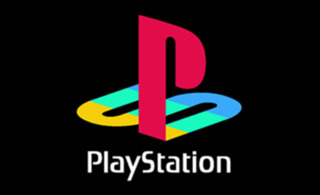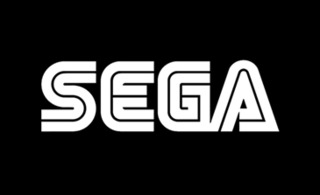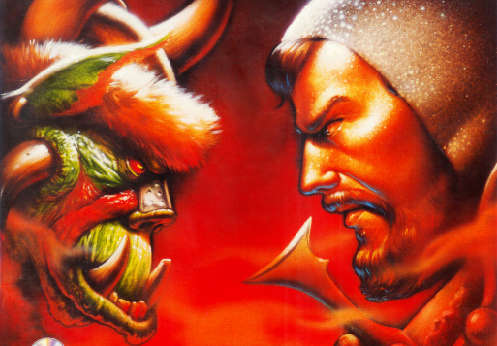Gaming Highlights From 1994
At the Consumer Electronics Show in Las Vegas, a decade after its console debut in North America, Nintendo dubbed 1994 the Year of the Cartridge. While there were many memorable cartridge-based hits that year, 1994 was also the stage for other trends. Numerous now-classic PC games made their debut, and Sega unleashed a wave of new hardware, which, in hindsight, may have put the company at significant financial risk.
Here's a look at the major events in video gaming that took place 20 years ago.
The Nintendo 64 Begins to Take Shape
When Nintendo first began to talk to the media about the Nintendo 64 in 1993, the system was referred to as "Project Reality." The 64-bit system was being designed by Silicon Graphics, which was best known for its involvement with the special effects in Terminator 2 and Jurassic Park. In May of '94, Nintendo and Silicon Graphics revealed that Project Reality would be a cartridge-based system, a decision they claimed was made in order to accommodate complex 3D games, which they believed would be too taxing for the speed of CD drives of the day. Later that year, Nintendo unveiled the physical design of Project Reality and gave it a new name, which it would also ultimately replace: "Ultra 64." It also revealed the first pair of games for the system: Killer Instinct and Cruis'n USA.
Sony Releases the Sony PlayStation in Japan

Following Sony's fallout with Nintendo after the two companies failed to bring a CD add-on for the Super Nintendo Entertainment System to market, Sony used its research and the resulting technology to create its own console, forever changing the game industry. Its first console, the PlayStation, launched in December of '94 in Japan with eight games, including one that would go on to become one of the most recognizable series in gaming: Ridge Racer.
Nintendo Debuts the Super Game Boy Add-On for the SNES
Nintendo gave people an opportunity to enjoy Game Boy games on their TVs when it released the Super Game Boy, which was a cartridge-based add-on for the SNES that let you play regular Game Boy games and certain Game Boy Color games via a pass-through slot. Since the games were mostly monochrome, Nintendo implemented a system that let you overlay different color schemes onto the black and white video of original Game Boy games, and apply borders around the screen to account for the difference between native resolutions of the Game Boy and Super Nintendo. It repeated this feat in 2003 with the Game Boy Player for the GameCube, which added support for Game Boy Advance games.
Sega Releases the Sega Saturn in Japan and the 32X and Sega Channel Service in North America

Sega put all of its cards on the table in 1994, releasing a slew of new hardware across the world in an effort to topple Nintendo. The first of these efforts was the Sega Channel, which, by the summer of 1994, allowed subscribers to any of 21 different cable companies to download games directly to their Sega Genesis. It was an affordable service at roughly $15 per month and lasted until July 1998, just over a year before Sega released the Sega Dreamcast, a system that was two console generations beyond the Sega Genesis.
In November of '94, Sega released a 32-bit add-on for the Genesis in North America, which extended the capabilities of the aging system. Oddly enough, a day after the debut of the 32X in North America, the 32-bit Sega Saturn was released in Japan. Not wanting to overshadow the release of its latest and greatest 32-bit hardware, Sega delayed the release of the 32X in Japan until December.
Console Gaming Highlights
Nintendo: When it comes to games, 1994 was a banner year for Nintendo. It released the final game for the Nintendo Entertainment System in North America, Wario Woods, and reaped the benefits of a series of great games that were released for the SNES: Super Metroid, Donkey Kong Country, Final Fantasy III, and Killer Instinct.
Sega: Sega advanced the Sonic the Hedgehog series with the release of Sonic the Hedgehog 3, but followed it up with Sonic & Knuckles, an original game in the Sonic series that let you control the latest addition to the cast: an echidna named Knuckles. Players who owned Sonic the Hedgehog 3 and Sonic the Hedgehog 2 could insert their cartridges into the top of the Sonic & Knuckles cart in order to replay those games as Knuckles, too.

PC Gaming Highlights
1994 was an interesting year for console gaming, but the PC also saw its fair share of new games, many of which would go on to become classics in the eyes of the industry at large.
- Silicon & Synapse changed its name to Blizzard Entertainment and released the first game in the Warcraft series, Warcraft: Orcs & Humans.
- LucasArts published the follow-up to its successful space flight simulator, X-Wing, titled Tie Fighter, which put you on the opposite side of the conflict between the Imperial and Rebel forces in the Star Wars universe.
- 1994 also saw two new games from Doom developer Id Software, including the renowned sequel, Doom II: Hell on Earth, and Heretic, the first game developed by an external studio (Raven Software) for Id.









